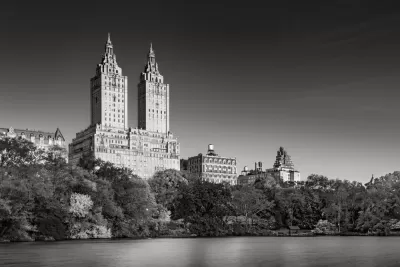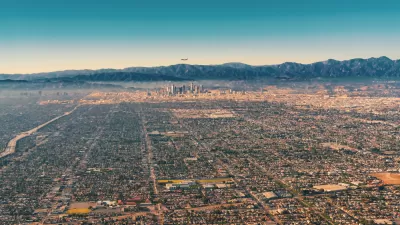In a free market, the richest neighborhoods would ordinarily be the most popular. But some well-off urban neighborhoods are actually losing population. Why?

When I reviewed New York City population data for a recent blog post, I discovered something surprising: two of Manhattan’s wealthiest areas, the Upper East Side and the Upper West Side, have lost [pdf] population since 2000.
Why doesn't this make sense? In a free market, affluent areas would normally be the most desirable, and as a result would attract new development and thus gain population. But the Upper East and West Sides have attracted little new housing. In fact, the Upper East Side has fewer housing units than it did in 2005; the Upper West Side's housing inventory has increased during this period, but by only 3 percent (from just over 115,000 units to just over 119,000)—a fairly astounding figure given the intensity of demand for Manhattan's more affluent neighborhoods.
This pattern is not unique to New York City. For example, Chicago's Lincoln Park, one of the city’s more affluent old neighborhoods, lost housing units during the 2000s. In the richest zip code in San Francisco's Pacific Heights (94123), the number of housing units increased between 2000 and 2016, but by less than 3 percent (from 14,851 to 15,217). In Washington's 20008 zip code (which includes most of the well-off areas surrounding upper Connecticut Avenue), the number of housing units increased by less than 1 percent (from 16,890 to 16,994).
Why would the richest areas lose population when other intown neighborhoods are becoming more populous? One likely culprit is zoning: the richest areas are the most politically powerful, and thus the most likely to resist new development. In New York, upper-class white areas are the most likely to be downzoned [pdf], while lower-class areas tend to be upzoned.
It could be argued that the real culprit for upper-class underpopulation is high vacancy rates caused by rich people using Manhattan apartments as second homes or investment vehicles. There is a tiny grain of truth to this argument: it is true that the Upper East Side and Upper West Side have more unoccupied homes than the rest of New York City. But in the four Upper East Side codes for which I was available to find data (10021, 10028, 10049, 10128), the number of unoccupied residences used for seasonal/occasional use (as opposed to being for sale or rent) actually decreased between 2000 and 2010. Moreover, that theory does'’t explain the loss of housing units in other cities: in Lincoln Park and the other non-New York zip codes discussed above, the unoccupied unit rate is about 8-9 percent, comparable to or even below citywide averages.
What happens when the richest areas don't allow new housing? First of all, housing prices go up a little everywhere as citywide supply is reduced. Second, people priced out of those areas move to cheaper areas and gentrify them—so people worried about gentrification and displacement should be especially worried about restrictive zoning in upper-class areas. Or to put it another way: if you don't want the upper class invading working-class areas, build more housing in the upper-class areas.*
*I note, however, that my point cuts both ways: it could be argued that by freezing people out of high-end areas, zoning prevents urban decline by encouraging gentrification of poorer areas. Whether you find the latter argument persuasive depends on whether you worry more about rising rents or about neighborhood decay; the best answer may be different in different cities.

Planetizen Federal Action Tracker
A weekly monitor of how Trump’s orders and actions are impacting planners and planning in America.

Maui's Vacation Rental Debate Turns Ugly
Verbal attacks, misinformation campaigns and fistfights plague a high-stakes debate to convert thousands of vacation rentals into long-term housing.

San Francisco Suspends Traffic Calming Amidst Record Deaths
Citing “a challenging fiscal landscape,” the city will cease the program on the heels of 42 traffic deaths, including 24 pedestrians.

Amtrak Rolls Out New Orleans to Alabama “Mardi Gras” Train
The new service will operate morning and evening departures between Mobile and New Orleans.

The Subversive Car-Free Guide to Trump's Great American Road Trip
Car-free ways to access Chicagoland’s best tourist attractions.

San Antonio and Austin are Fusing Into one Massive Megaregion
The region spanning the two central Texas cities is growing fast, posing challenges for local infrastructure and water supplies.
Urban Design for Planners 1: Software Tools
This six-course series explores essential urban design concepts using open source software and equips planners with the tools they need to participate fully in the urban design process.
Planning for Universal Design
Learn the tools for implementing Universal Design in planning regulations.
Heyer Gruel & Associates PA
JM Goldson LLC
Custer County Colorado
City of Camden Redevelopment Agency
City of Astoria
Transportation Research & Education Center (TREC) at Portland State University
Jefferson Parish Government
Camden Redevelopment Agency
City of Claremont





























